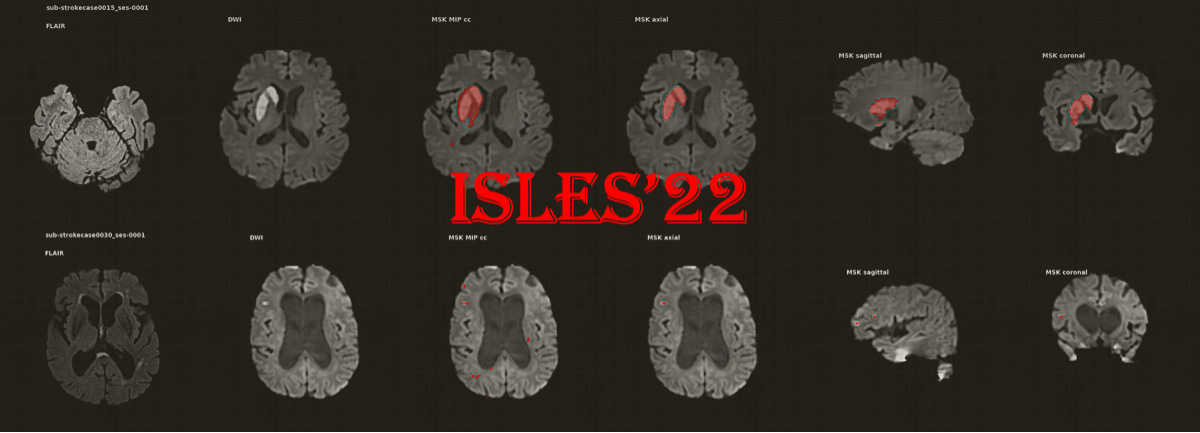Ischemic Stroke Lesion Segmentation Challenge - ISLES'22¶
MULTIMODAL MRI INFARCT SEGMENTATION IN ACUTE AND SUB-ACUTE STROKE¶

-------------------------------------------------------------------------------------------------------------------------------------------------------NEWS
-
ONGOING CHALLENGE WITH CONTINUOS EVALUATIONS
- This challenge remains open.
- Participants can submit to the test-set ONE docker per month
- Test-set will not be released in order to allow continuous evaluation of methods.
-
MICCAI'22 CHALLENGE ENDED
BACKGROUND¶
Infarct segmentation in ischemic stroke is crucial at i) acute stages to guide treatment decision making (whether to reperfuse or not, and type of treatment) and at ii) sub-acute and chronic stages to evaluate the patients' disease outcome, for their clinical follow-up and to define optimal therapeutical and rehabilitation strategies to maximize critical windows for recovery.This challenge task aims to benchmark infarct segmentation in acute and sub-acute stroke using multimodal MRI data, namely DWI, ADC and FLAIR images. ISLES'22 differs from the previous challenge editions in ischemic stroke by i) targeting the delineation of not only large infarct lesions, but also of multiple embolic and/or cortical infarcts (typically seen after mechanical recanalization), ii) by evaluating both pre- and post- interventional MRI images and iii) by including ~3x more data than ISLES'15 (a previous challenge edition with similar aims).From a clinical perspective, ISLES'22 focuses on the clinical growing interest of acute embolic infarct patterns, both pre-intervention (i.e. at a very early disease state) and post-intervention (typical, post-interventional sub-acute infarct patterns not restricted to a single vessel territory). This clinical problem also challenges the participants from a technical perspective: teams will deal with a wider ischemic stroke disease spectra, involving variable lesion size and burden, more complex infarct patterns and variable anatomically located lesions in data from multiple centers.
TASK¶
The goal of this challenge is to evaluate automated methods of stroke lesion segmentation in MR images. Participants are tasked with automatically generating lesion segmentation masks from DWI, ADC and FLAIR MR modalities. The task consist on a single phase of algorithms evaluation. Participants will submit their segmentation model ("algorithm") via a Docker container which will then be used to generate predictions on a hidden dataset.
